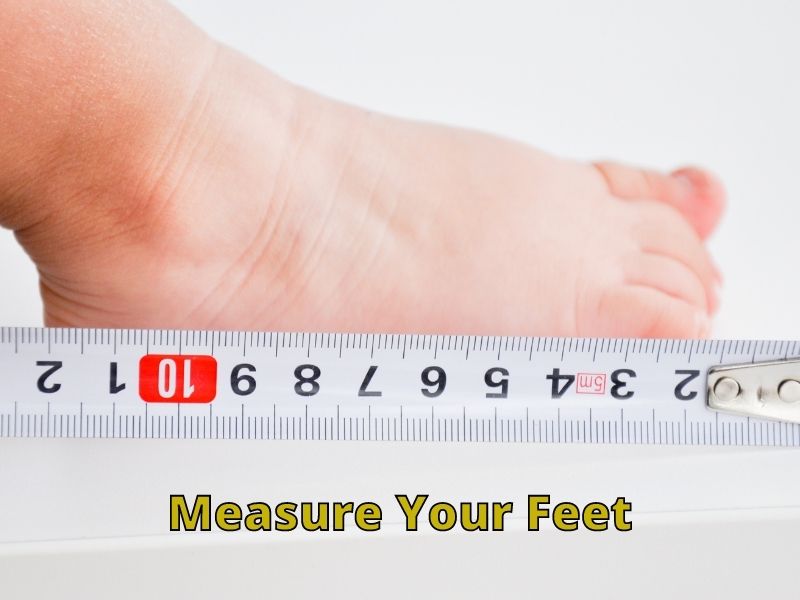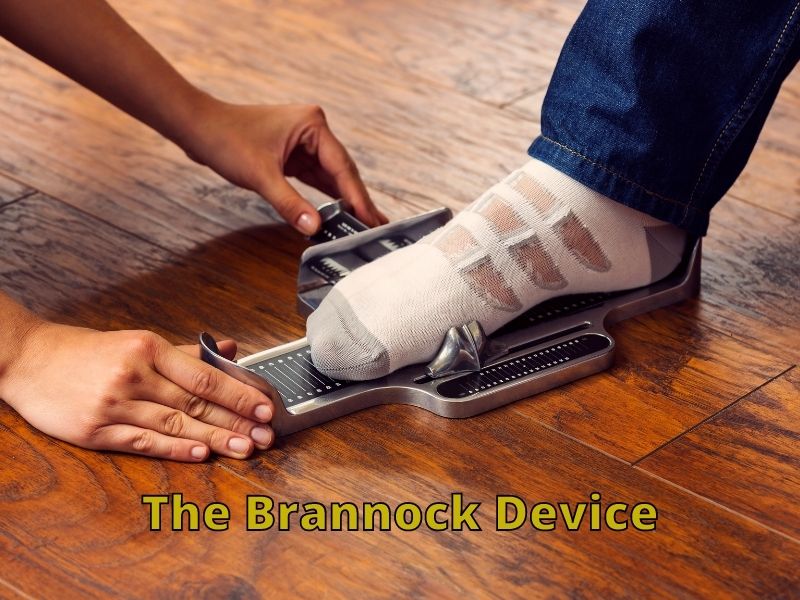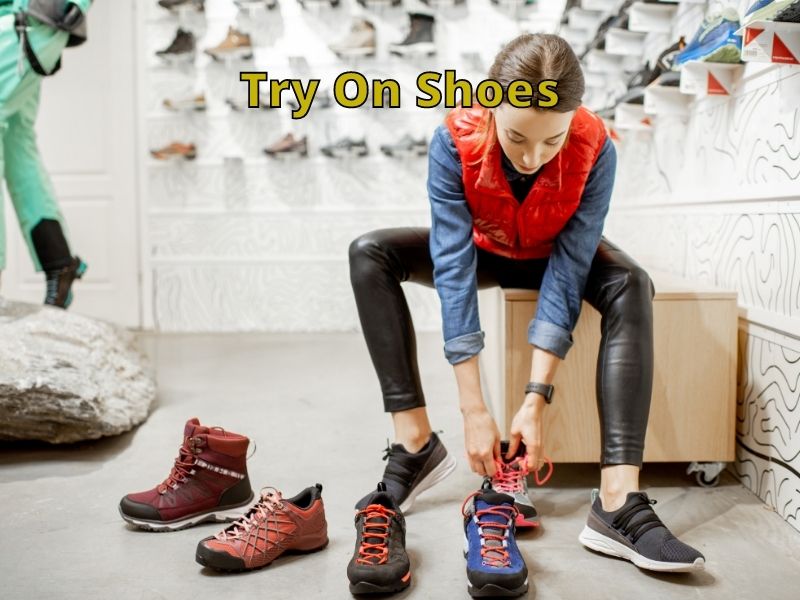Many of us buy shoes by looking at the brand, style, or shoe look without considering the most important factor: the size and fit. We may not realize the best way to get the right fit for our shoes?
A shoe should fit snugly on your foot but not be too tight. It should have a wide enough toe box that does not squeeze your toes, have a comfortable heel cup to prevent slipping of your foot, and be wide enough to fit the width and length of your foot.
Here are the three methods to help you fit shoes right:
- Measure Your Feet – This will help with precision in finding a better fitting shoes.
- Understand The Parts Of A Shoe – This will help you with choosing a good quality shoe.
- Try On The Shoes – This will give you data you can use to find the best fitting shoe.
You’d probably think it would be easy to know when a pair of shoes fits perfectly just by knowing your foot size or your shoe size. But it’s not! It’s actually much more than that. So if you want to know more, then keep on reading.
Here are the methods to fit shoes right:
1. Measure Your Feet To Get The Right Fit

First, you need to measure your feet to fit your shoes right. There are two methods you can use. You can measure your feet at home or at the store using the Brannock device.
How To Measure Your Feet
Measuring your feet is essential to determine the correct shoe size [helpshoe.com] and the right shoe fit. The best method is to have your feet measured by a professional. However, online shopping will require you to do it all yourself at home.
Measure Your Feet at Home
Here are a few simple and easy steps to measure your feet at home: (you can check these steps in detail here at helpshoe.com)
Things you need:
- A piece of paper
- A pen or pencil
- A ruler or a measuring tape
Steps to follow:
- Wear a thick pair of socks.
- Take a piece of paper and place it on a flat surface.
- Take off your shoes and place your foot comfortably over the piece of paper.
- Take a pencil, hold it perpendicularly to your foot and draw the outline of your foot.
- Grab a measuring tape or ruler.
- Measure your foot length from tracing (the distance between the tip of the longest toe and the center of the heel curve)
- And measure your foot width (below the toes is the broadest part of your foot.)
- The only drawback of measuring your feet at home is that you won’t be able to measure your foot arch.
Measure Your Feet with The Brannock Device

The Brannock device is perfect for accurate feet measurements, i.e., Length, width, arch. It is usually available at department stores or shoe stores. They help you to get your feet measured before buying your shoes.
You can accurately measure your feet and determine your current shoe size using The Brannock device. The only drawback with the Brannock device is that it doesn’t measure your instep.
Measure Your Feet Later in The Day
When you want to measure your feet, I suggest doing it later in the day. I am saying this because your feet are likely to swell by the end of the day.
I would also suggest going shopping in the evening because if you shop too early in the day, you might end up buying shoes that are too tight for your feet.
Stand While Measuring Your Feet
Always stand up while measuring your feet. Are you wondering how it affects the size of your feet? It is because your feet tend to spread out more when you stand. Also, it will be better if you have someone else to measure your feet for more accuracy.
Measure Your Arch Length
Measuring the arch length is essential for the right shoe fit. You can determine your arch length by measuring the distance from your heel to the ball of your foot (the point at which your big toe bends).
For the right shoe fit, your big toe must bend in the same place as where your shoe bends. You can find it by putting on your shoes and standing up on your toes. The shoe doesn’t have the right fit for your arch length if it bends before or after your big toe joint.
Fit The Shoe to Your Larger Foot
Every person has one foot that is slightly larger than the other, and so do you. Therefore, whenever you check the size and fit of the shoe, always try it on the larger foot.
You can always add inserts and extra pads to the slightly big shoe to fill in the extra space, but you can’t add extra room to a shoe that is too tight.
2. Understand Parts of a Shoe So It Fits Correct

Finding the right shoe fit may be easier if you understand the different parts of a shoe. A Shoe’s stability is determined by the material they are made of, e.g., A leather shoe is more durable than a mesh shoe. Also, shoes made of man-made materials usually offer less support and may lose their shape over time.
There are two parts of a shoe – the upper and the lower. The shoe’s upper part has the toe box, the heel, and the vamp, whereas the lower part has the insole, outsole, midsole, and shank.
Toe-Box
The toe box is the front part of a shoe where your toes rest. This part can be square, rounded, or pointed, depending on the style of the shoe.
The wider the toe box, the more space your toes will have. Therefore, the toe box is an essential factor to consider, especially for people who have hammertoes or crossover toe.
Heel Counter
A heel counter is usually a piece of rubber at the back of a shoe that secures the heel in place.
Heel control and stability depend on the firmness of heel counters. The stiffer the counter is, the more heel stability it provides. The heel counter is an important part of the shoe for people with pronated (flat) feet.
Vamp
The vamp is the mid-portion of the shoe covering the top of your foot and is usually closed with laces or snaps. The vamp should snugly fit your foot, keeping it in place firmly and comfortably. However, it shouldn’t be too tight or too loose.
If the vamp is too tight, it will cause numbness or toe pain, while those too loose will cause your heel to slip out of the shoe. A shoe with a higher vamp will give you more stability.
Insole
A shoe’s insole is the inside of the shoe where your foot rests. Shoes with removable insoles offer you more convenience and greater flexibility. Since you can remove them or replace them with an orthotic or a cushioned insole.
Outsole
The outsole refers to the lower outer part of the shoe, usually called the shoe’s sole. It is generally made from blown rubber, durable leather, or other man-made materials. You need to Check the outsole’s shape to ensure it fits your foot.
Midsole
The midsole is the material between the shoe’s upper and outsole. The midsole of a running shoe is constructed with various materials that provide cushioning or increase stability. In addition, softer materials offer more shock absorption.
Shank
The shank lies beneath the arch of the foot. You need to look for shoes with stiffer shanks because they provide more support to your foot. Your shoe should bend at the toe box rather than the arch/shank to conform to the natural bend in your foot.
3. Try On Shoes To Check Fit

To see if the shoe fit is right or not, you have to try them on first before buying. If you are shopping offline, it won’t be a problem to check the size and fit at the store. However, when buying shoes online, you need to try them on before deciding whether to keep them.
Most of us consider style and looks the most important factors when choosing a shoe. But, in fact, they aren’t the only factors to be considered.
To prevent foot problems and have a comfortable walk, your shoe should fit your foot and conform to its shape and size. Also, choose appropriate shoes for the activities you perform, such as walking, running, or standing for a long time.
The most important factor for the right shoe fit is not to buy it based solely on its size. Because shoe size varies from brand to brand and style to style. Therefore, you need to try them first and then buy the one that fits perfectly irrespective of the size.
How To Shop for Shoes That Fits Right
Shop Late in The Day
Just like measuring your feet later in the day, I would suggest you shop later in the day as well. The mid-to-late afternoon is the best time to shop for shoes because your feet are entirely expanded.
During the day, your feet tend to swell, so buying shoes later in the day will ensure maximum comfort. Also, Visit shoe stores with a variety of price ranges and styles.
Another important thing for the right shoe fit is regularly measuring your feet. Make sure you are standing while measuring your feet (by yourself or a professional) since your body weight will expand your feet.
Wear Your Regular Socks
Whenever you try a new shoe, always wear the socks you would typically wear with those shoes. Your new shoe should comfortably snuggle with your sock on.
Sock thickness plays a major role in shoe fit. So it’s a good idea to bring your socks while buying closed shoes, especially the kind of socks you’ll wear with them anyway. For example, try on your dress shoes while wearing the same sock that you normally wear with your dress shoes. Or, let’s say when you try on sneakers, wear athletic socks if you wear them with sneakers.
Consider Your Activities
Whenever you buy a new shoe, always consider the activities for which you buy those shoes, such as running, walking, hiking, or standing for long hours.
Don’t go for the shoes that are too loose or too tight because as you run, your feet need to spread out, so you’ll have to tie the laces loosely.
Roomy Toe Box
Your toes need space to move freely. If there is not enough room for your toes to move, you may develop foot problems like calluses, corns, and neuromas.
Whenever you try a new shoe, I recommend leaving about a half-inch gap between the tip of your longest toe and the front of the shoe.
The longest toe is different for different people. Most of us have the big toe as the longest toe, but some also have the second toe or even the third toe as the longest. So, make sure to measure the distance based on your longest toe, not the largest toe.
If your feet are too wide for a shoe, choose a different brand with a wider toe box instead of going up a size just to fit your feet.
You may find the larger shoe a bit more comfortable with the width, but having too much room in the toe box can cause blisters and toe pain if your foot slides forward and back constantly. The right shoe fit should conform to your foot’s shape.
Leave Gap at The Back of The Shoe
To keep your heel comfortable, the back of your shoe should not be too tight. Otherwise, it may irritate the skin and cause blisters. I recommend leaving about an eighth of an inch of space between your heel and the shoe.
As you stand on the balls of your feet, place your finger between the back of your foot and the heel of your sports shoes. If the finger feels too snug, go a half size up.
Try On Larger Foot
As I mentioned earlier, your one foot is slightly larger than the other, so make sure to try your new shoe on the larger foot first. Then, of course, you have to check both shoes on but buy the one that fits your larger foot.
Put On Both Shoes and Walk
There’s no rush. Take your time, put on both shoes, and walk around. If available, walk on the different surfaces in the store.
If you feel the shoe is too hard, likely, they will not soften enough to make wearing them enjoyable.
Don’t be shy. If you aren’t comfortable with the size or fit, ask for another pair or try a different size. After all, you are spending huge amounts of money, so your shoes need to fit right and are comfortable.
Shoes Need to Be Comfortable
If shoes aren’t comfortable, there is no point buying them or keeping them. When you try it in the store, your feet should feel comfortable. Avoid buying uncomfortable shoes hoping they will break-in. If you buy shoes online and are uncomfortable, return them right away.
Thanks for visiting helpshoe.com
References

![How To Fit Shoes Right_ [3 Methods]](https://helpshoe.com/wp-content/uploads/2022/02/How-To-Fit-Shoes-Right_-3-Methods.jpg)